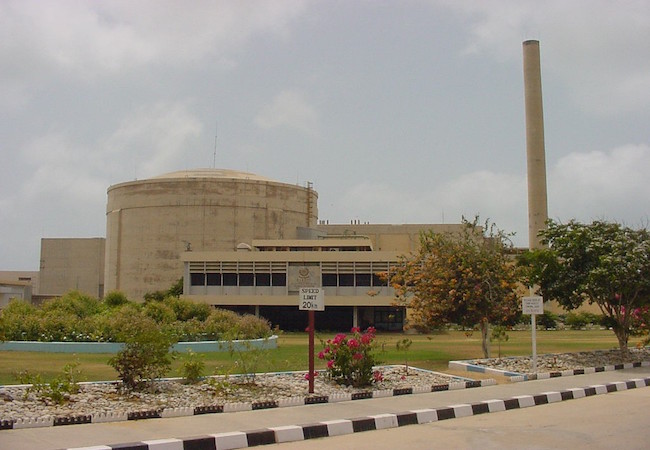
By Shahzadi Tooba Hussain Syed
The nuclear accident at Chernobyl was the worst nuclear accident to date, spewing about 100 million Curies of radioactive material into the environment. By contrast, the accident at Three Mile Island released only some 15 Curies. Though its health effects were minimal, Three Mile Island did perhaps irreparable damage to the level of public confidence in nuclear reactors for electric power production in the United States.
Preceding these two high-profile accidents are a number of nuclear accidents with radiation release. These include accidents at the Fermi I reactor near Detroit, at the NRX reactor at Chalk River, Canada, at the Windscale reactor in England, and the SL-1 Reactor at Idaho Falls.
Even the Fukushima power plants had survived the massive earthquake that accompanied the tidal wave, but it was the latter tsunami, which incapacitated the emergency diesel generators, that caused the plants to collapse.
After Fukushima, most countries have continued to construct and plan for new power plants. In Asia the number of under-construction and planned power plants is the highest in the world; around 49 reactors are presently under construction, and there are firm plans for over a 100 more. Countries where these projects are underway include India, China, South Korea and Pakistan. These 149 reactors will be in addition to the 435 reactors already in operation in the world.
Subsequent to Fukushima, studies were carried out for the Karachi sites to ensure that the plant systems to be built would survive the biggest earthquake and tsunami that can be expected in the area.
After Fukushima important lessons have been learnt and the possibility of accidents occurring in unexpected ways is fully recognized and preventive mechanisms are duly incorporated in the designs of present day nuclear power plants. Post-Fukushima, nuclear power plants are being equipped to cope with the most unlikely scenarios of total blackout and non-functionality of several of the engineered safety features incorporated in these plants. These include multiple barriers in the design and several levels of safety assurance throughout the design, construction and operational phases.
There have been many concerns over the design ACP1000 for the Karachi Nuclear Power Plants in Pakistan. International Atomic Energy Agency (IAEA) has completed the key Generic Reactor Safety Review (GRSR) of ACP-1000 nuclear reactors, which Pakistan is installing in Karachi to end up the energy crisis. The major worry is of the design which is based on Pressurized Water Reactor and widely been used throughout the globe.
Questions are being raised about the design model of Karachi power plants. This design is based on the PWR concept, very similar to the hundreds of such systems operating around the world for more than 50 years. Chashma 1 and 2 power plants are also based on the PWR designs. The ACP-1000 reactor is based on an improved French design. It uses the basic PWR design with safety improvements added, to meet the current safety targets of Generation-III reactors and after incorporating the lessons learnt from the Fukushima accident. It is based on the earlier CPR1000 design, which has been used in 15 plants now under construction in China, of which the first unit started operations in 2010.
One of the major difference between Gen 2 and Gen 3 nuclear plants is that Gen 2 nuclear plants were designed to rely on “active” safety techniques—techniques that require electrical, mechanical, and human actions to work. Unfortunately, active safety measures are vulnerable to electrical, mechanical, and human failures, whereas Gen 3 reactor designs are more standardized and include “passive” safety features that are less vulnerable to failure because they do not rely on electrical, mechanical, or human actions to operate.
In Gen 2 plants like Fukushima in Japan and Three Mile Island in the U.S., active systems provide all the cooling. When those active systems failed at Fukushima and Three Mile Island, both plants suffered partial core meltdowns. Fukushima also suffered a containment vessel rupture, releasing radioactivity and making areas around the plant uninhabitable.
Although safety is important throughout any nuclear power plant, the reactor is of greatest concern. If any unusual event concerning a reactor occurs at a plant, control rods are immediately inserted into the core to stop the fission reaction. However, even after fission ceases, fuel emits heat through radioactive decay. This radioactive heat must be addressed, and in Gen 2 plants, active water-based cooling systems are the method used. Without cooling, reactor fuel rods can overheat from radioactive decay, causing a core meltdown. Increasing temperatures also raise pressures in the containment vessel. If the containment vessel vents that release this pressure fail to open, internal pressures can rise, rupturing the vessel. If this happens, radioactive steam and particles will be released. This demonstrates what can happen when active cooling systems fail.
These events explain why passive safety systems for future plants have become highly desirable.
AP-1000 pressurized water reactors employ passive cooling systems as emergency back-ups to active systems. These systems use simple physics to cool reactors—hot air rises, water flows downhill, steam cools and condenses to water, and heated water gains heat, which makes it evaporate.
The prime advantage of nuclear energy is that it does not depend on fossil fuels and is not affected by fluctuating oil and gas prices. Coal and natural gas power plants emit carbon dioxide into the atmosphere, which contributes to climate change. Nuclear power plants on the other hand emit minimum carbon dioxide.
It is important to note that 59 nuclear power plants ACP 1000 reactors are scattered throughout France, which is smaller than Texas, and generate 78 percent of its electricity. Furthermore, President Obama approved $ 8 billion worth of loan guarantees to build new reactors in the US while canvassing aggressively to sell nuclear reactors to India. The key is thus in enhanced safety measures and not shunning nuclear energy on a whim.




